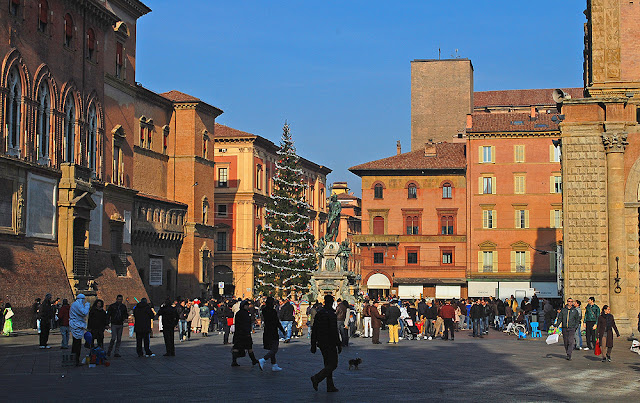Ingrid and Pucci had arranged some time ago for us to spend a non-work and non-boat weekend together. So, straight after school on Friday afternoon we set off for the six hour drive down to Bologna Austria which is all mountains and Alps . Even without the signs, you know when you cross the border into Italy Verona is all downhill along the Adige valley and quite fascinating Alpine scenery. The last hour across the flat Po delta was rendered quite interesting by an incredibly thick fog. Here you witness a huge variety of driving styles, from pedestrian to lunatic.
The first task on Saturday morning was to find the best cappuccino in
It was fun being a full-on tourist in a place where I had lived for 8 years, albeit 20 years ago. Aldo and Pucci found it to be an interesting novelty as well. If you are able to blinker out the modern day accoutrements of McDonalds, power lines and traffic it is very easy to be enveloped by the medieval atmosphere of the city centre.
We visited one of my favourite haunts, the Santo Stefano basilica, also known as le Sette Chiese (as it is a complex of seven churches, although I have only ever been able to find four or five of them.)
On Sunday, we went out into the country for a traditional long Romagna lunch of deep fried flat bread, piadina with salami, prosciutto, pickled greens and squacquerone, a very soft cheese produced in the

















